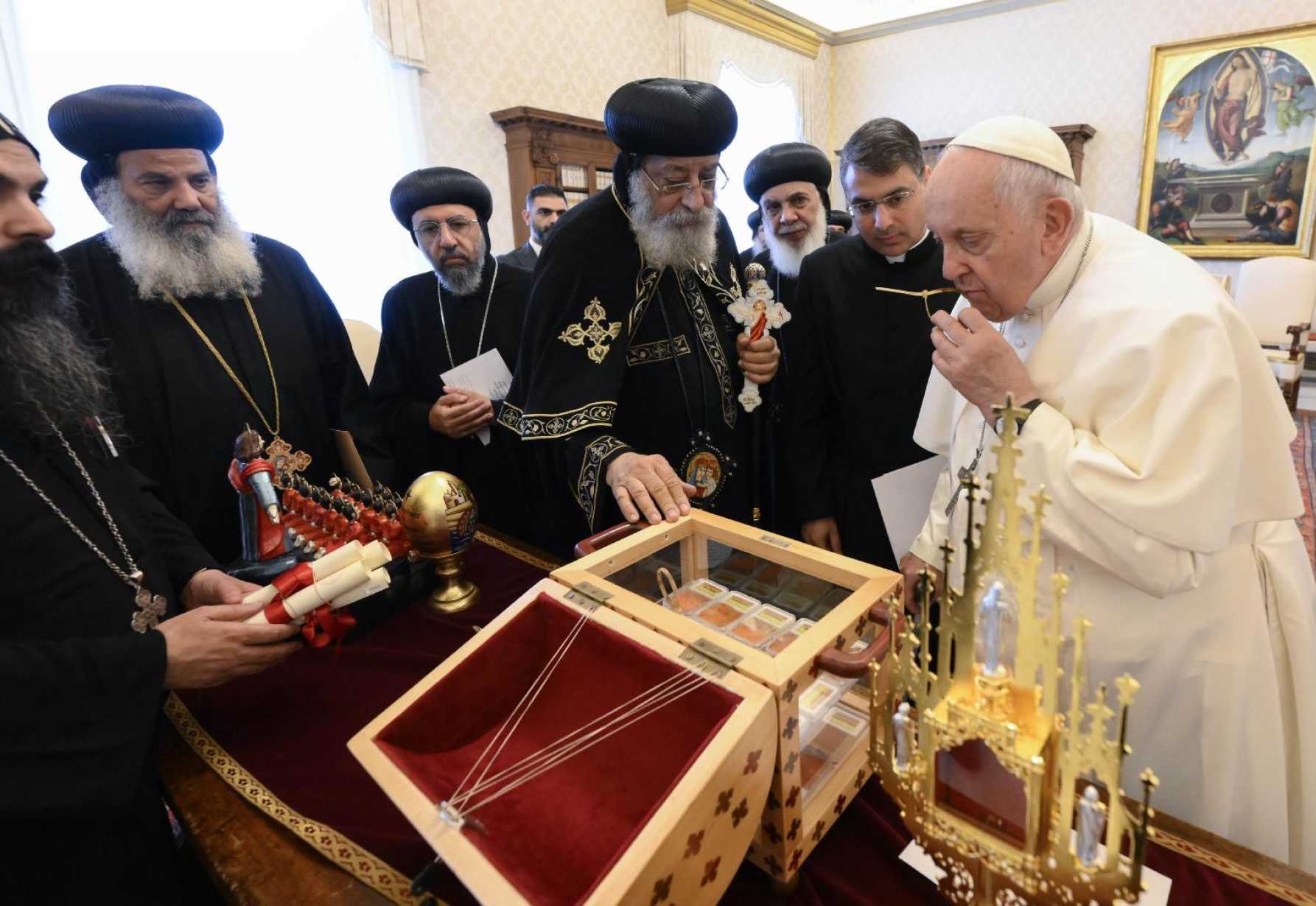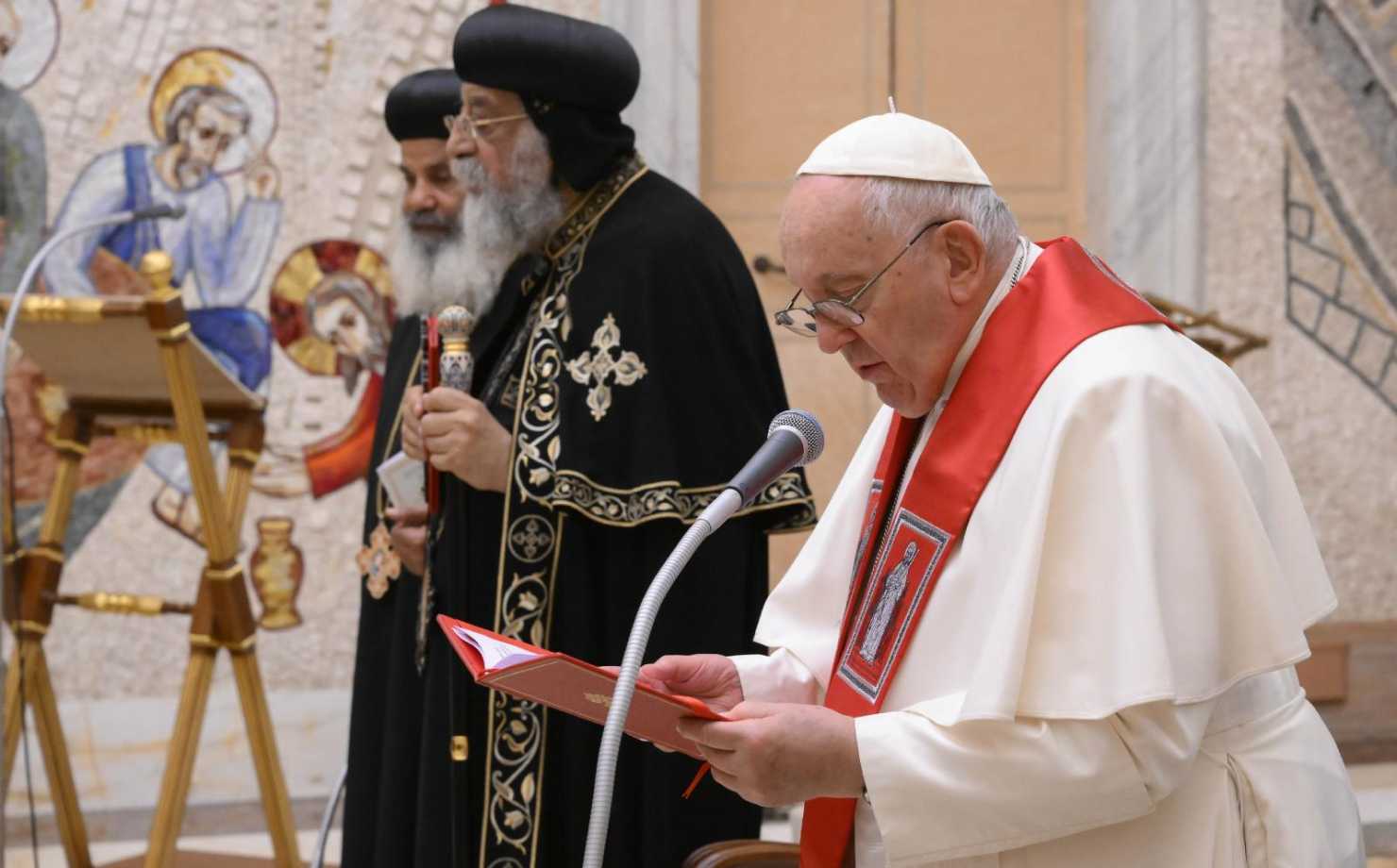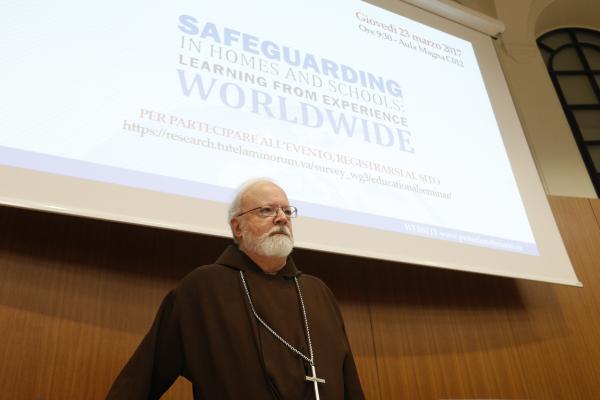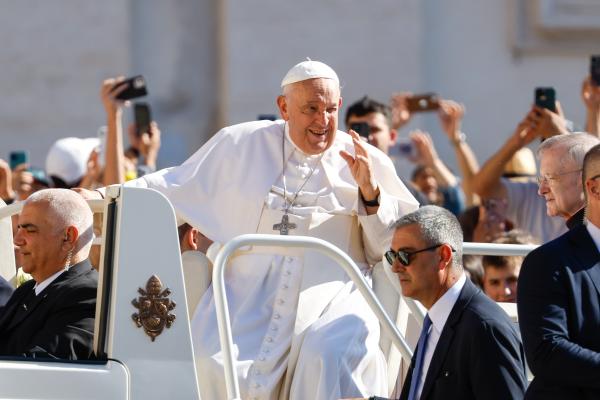United in prayer: Pope adds Coptic Orthodox martyrs to Catholic calendar
Meeting Coptic Orthodox Pope Tawadros II of Alexandria, Egypt, Pope Francis paid tribute to the 21 Coptic martyrs murdered by Islamic State in 2015, noting they were killed for being Christian, not for being Orthodox. And he announced that they would be added to the Roman Martyrology, the book-length calendar of saints and blessed remembered by Catholics at Mass.
 Cindy Wooden
Cindy Wooden

Pope Francis kisses one of the relics Coptic Orthodox Pope Tawadros II of Alexandria, Egypt, gave him of the 21 Coptic martyrs murdered by Islamic State terrorists in 2015 during a meeting May 11, 2023, in the library of the Apostolic Palace at the Vatican. (CNS photo/Vatican Media)
VATICAN CITY (CNS) -- Pope Francis has continued his predecessors' serious commitment to ecumenical dialogue, but he also makes ecumenical gestures that underline that seriousness.
During his formal meeting May 11 with Coptic Orthodox Pope Tawadros II of Alexandria, Egypt, Pope Francis announced that he was adding to the Catholic calendar of saints the 21 Coptic martyrs killed in Libya by Islamic State fighters in 2015.
Pope Francis repeatedly has said that the 21, like most Christian martyrs today, were not killed because of the denomination they belonged to, but simply because they were Christian. The Coptic martyrs, he said, "are also ours."
Meeting in the library of the Apostolic Palace, Pope Tawadros made a special presentation to Pope Francis.
"I have no words to express my gratitude for the precious gift of a relic of the Coptic martyrs killed in Libya on Feb. 15, 2015," Pope Francis told him.
"These martyrs were baptized not only in water and the Spirit, but also in blood, blood that is a seed of unity for all followers of Christ," he said. "I am pleased to announce today that, with Your Holiness' consent, these 21 martyrs will be included in the Roman Martyrology as a sign of the spiritual communion that unites our two churches."
The martyrology -- with more than 6,500 individual names and close to 7,000 unnamed martyred "companions" -- is organized as a calendar; it lists the saints and blesseds whose feast is celebrated by the Catholic Church each day and provides a small biography of each.
At more than 800 pages, the martyrology is considered a liturgical book, not a catalogue or history, because it forms the basis for determining which saint is remembered at Mass each day.
Catholics, Orthodox, Anglicans and mainline Protestants recognize hundreds of the same saints and martyrs because they have been honored for their holiness from centuries before the churches split.
What Pope Francis did is something new.
"This is a first," said Bishop Brian Farrell, secretary of the Dicastery for Promoting Christian Unity.
During ecumenical meetings and prayer services, he said, it is common to "commemorate informally" saints and martyrs of another tradition, "but there never has been a decision to put them into the martyrology," thus formally including them "in the prayer of our church."
Speaking to reporters after his meeting with Pope Francis, Pope Tawadros said Pope Francis had promised "to set up a special altar" for the relics.
And, he said, the relics of the 21 modern martyrs were not the only ones exchanged during the visit.
Pope Francis presented to the Copts a relic of St. Catherine of Alexandria, a fourth-century martyr.
While Pope Francis' announcement of the addition to the martyrology was a big gesture, it was not the only one he made during the visit of the Coptic leader.
Pope Tawadros was scheduled to sit alongside Pope Francis at his weekly general audience May 10 and make brief remarks to the crowd.
Pope Francis was scheduled to make brief remarks about the ecumenical visit, too, but plans called for him to also give his standard audience talk, continuing a series on zeal for evangelization.
Instead, the pope skipped his main talk, which created even more of a sense of equality between the two popes seated side by side on the stage. And, at the end of the audience, he gave the crowd in St. Peter's Square his blessing, then invited Pope Tawadros to do the same.
Except for Pope Tawadros' gift of the relics and Pope Francis' announcement that the Catholic Church would add the martyrs to its calendar of saints, their formal meeting May 11 followed long-established protocol: an exchange of speeches and of gifts in the papal library followed by joint prayer in the Redemptoris Mater Chapel down the hall.
Pope Francis' final gesture for the Coptic leader's visit was planned for May 14 when, with his blessing, Pope Tawadros was scheduled to celebrate the Divine Liturgy for Copts living in Italy at the Basilica of St. John Lateran, Pope Francis' cathedral as the bishop of Rome.
The Vatican "Directory for the Application of Principles and Norms on Ecumenism" states that Catholic churches are "generally reserved for Catholic worship. However, if priests, ministers or communities not in full communion with the Catholic Church do not have a place or the liturgical objects necessary for celebrating worthily their religious ceremonies, the diocesan bishop may allow them the use of a church or a Catholic building and also lend them what may be necessary for their services."
Pope Tawadros told reporters May 11 that while his faithful have four parishes in Rome, all of the churches are very small and would not accommodate a gathering of the faithful with their pope.

"Celebrating this liturgy (at St. John Lateran) is a sign of fraternity between our two churches," he said. He also noted that in 2018, he and his community were given permission to celebrate the Eucharist at the Basilica of St. Paul Outside the Walls.
The Coptic church is one of the Oriental Orthodox churches -- Christian communities of North Africa, the Middle East and India -- that accepted the teachings adopted at the first three ecumenical councils, but rejected the Christological definition of the fourth council, held in Chalcedon in 451.
However, through theological and ecumenical dialogue, the Oriental Orthodox churches and mainline Christian communities have concluded that those differences were a matter of terminology and not substance. Between 1971 and 1996, leaders of each of the independent Oriental Orthodox churches signed declarations with either St. Paul VI or St. John Paul II affirming a common faith in Christ's humanity and divinity.
"Reconciliation and unity require a long journey," Pope Tawadros told reporters, "and this is happening after 15 centuries of separation."
- - -
Follow Wooden on Twitter: @Cindy_Wooden



